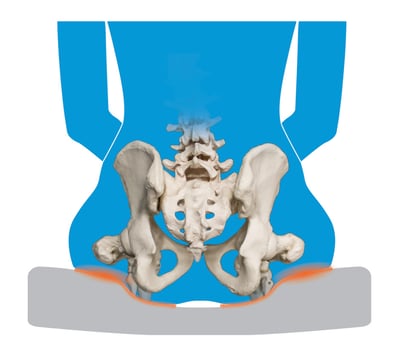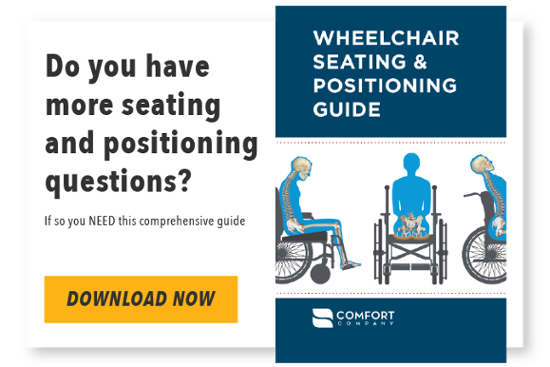Looking for more information on seating and positioning? Check out our digital, rehab-focused Wheelchair Seating & Positioning Guide here.
We've talked about methods of pressure redistribution in the past. Today we're taking a closer look at offloading / partial offloading and the benefits and considerations associated with this style of pressure redistribution.
Offloading / Partial Offloading
The principle of taking pressure off of a small surface area and loading it onto a greater surface area that can withstand more pressure and prevent unwanted skin breakdown.
There are times when complete offloading is possible with cushion geometry and cutouts, but many times partial offloading is used. This means that there is still contact with the support surface under the bony prominences, however, the pressure is greatly reduced because it has been redistributed to areas that can withstand greater pressure.

Benefits and Considerations of Offloading / Partial Offloading
| Benefits | Considerations |
|
Firmer surface, may create a “safer” end feel for the patient |
May not be suitable for someone with hypersensitivity due to the firm end feel; depends on personal preference |
|
Partially or completely suspends the ITs, sacrum, and coccyx for pressure relief |
Not typically recommended for clients at risk of pressure injury at the greater trochanter since pressure is redistributed to that area |
|
Redistributes pressure to the trochanters and femurs, areas with greater surface area that can withstand more pressure |
Someone with significant lower extremity contractures may not “fit” the pre-contoured shape |
|
Provides more stability to someone lacking trunk or pelvic strength to prevent unwanted movement |
Contours may make independent transfers more difficult for someone with decreased strength |

 Stacey Mullis, OTR/ATP
Stacey Mullis, OTR/ATP
Director of Clinical Marketing
Stacey serves as Director of Clinical Marketing for Permobil. A practicing OTR for over 20 years, she has experience in school-based pediatrics, inpatient rehabilitation, long term care, and home health. With her interest in wheelchair seating and positioning, Stacey engaged the challenges of providing appropriate seating in various clinical settings. She now uses this experience to develop programs and resources to educate clinicians on the principles of seating and wheeled mobility. She is passionate about equipping clinicians and through her previous role as Director of Clinical Education with Comfort Company and now with Permobil she has taught nationally and internationally to increase therapist capacity in this specialty area. Mullis graduated from Western University in London, Ontario, Canada with a BA Linguistics and BSc Occupational Therapy. She is a member of the NCOTA, CTF Executive Board, NRRTs, RESNA, and AOTA.

